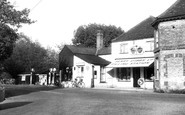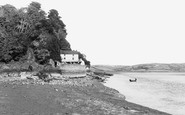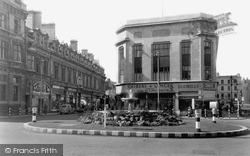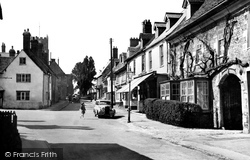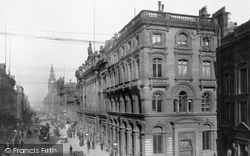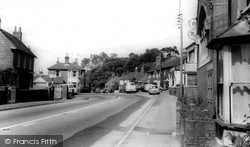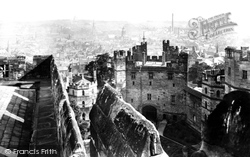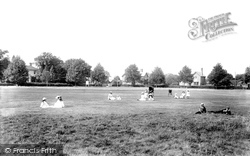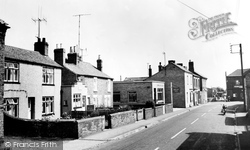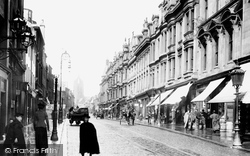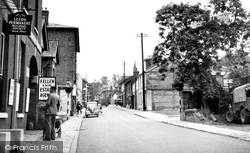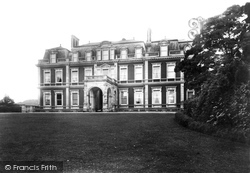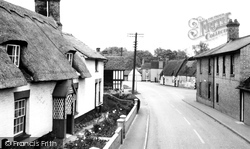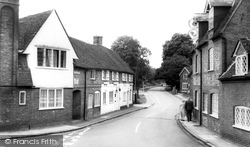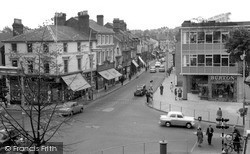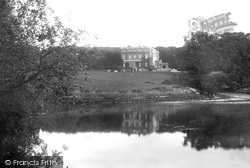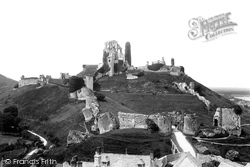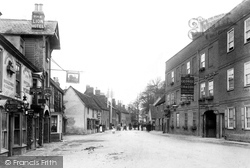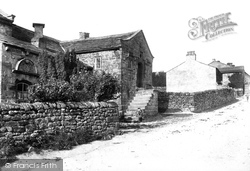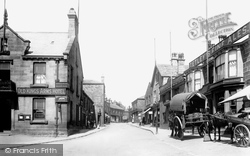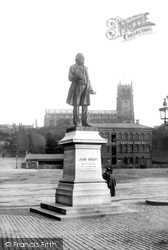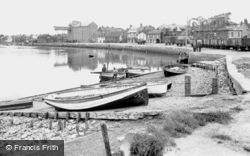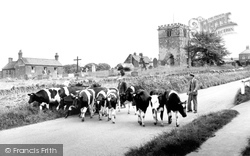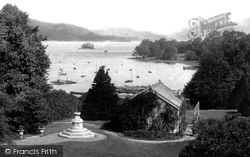Places
11 places found.
Those places high-lighted have photos. All locations may have maps, books and memories.
Photos
54 photos found. Showing results 1,401 to 54.
Maps
494 maps found.
Books
25 books found. Showing results 1,681 to 1,704.
Memories
9,956 memories found. Showing results 701 to 710.
A Glance Backwards
I came to live in Stadhampton in 1954 from Henley on Thames. My father was the village Policeman. I found that even for 1954 life in Stadhampton was comparatively primitive compared with what I was used to! But it was a ...Read more
A memory of Stadhampton in 1954 by
Holidays In Laugharne
I and my family stayed at the Ferry House, next to the Boat House from 1965 to 1973. The house was then owned by the wife of my dad's boss and we used to be able to go for a fortnight each summer. We used to park our car, ...Read more
A memory of Laugharne in 1965 by
Lawshall Shop
In the 1930s my grandparents had a small general store/shop at the crossroads in Lawshall. It has long since converted back to a cottage and has an extension where the shop used to be we think. They left there before the Second ...Read more
A memory of Lawshall by
River Row
My family lived in the end cottage in River Row,our garden backed on to the river and railway line beyond.My brother and I were aged 3 and 4 years old and I can remember waving to my father as he went to work in the pits, the train ...Read more
A memory of Treherbert in 1951 by
Memories Of Sneinton
Betty and I were brought up in Davidson Street, Sneinton just before the Second World War. It was a small back-to-back terraced house with an outside toilet. One of my first recollections was being bathed in the small kitchen ...Read more
A memory of Sneinton in 1930 by
Please Help!
Hi! I have recently been researching into my family history, and I came across a photograph dated to around the early 1870s in my home. On the back it read Wm Hughes photographer and oil painter in Llangefni and Amlwch on Sundays ...Read more
A memory of Llangefni by
Happy Days
Born in the Dibden Perlieu nursing home in 1943, I then lived in both Blackfield and Fawley. Growing up was a challenge in those days, but we survived. I attended school at both Fawley and Hardley. Summers were spent on the raft at ...Read more
A memory of Fawley in 1958 by
My Family
My dad Lyndon is originally from Gilfach Goch, his dad was called Bill (Billy the book), his mum was Ivy and his sisters are Phylis, Tisha and Doreen, his brother was called Gwylim. They lived in Windham Street and then moved to ...Read more
A memory of Gilfach Goch in 1955 by
Cheadle In The Second World War
I think that we must have moved to Cheadle around 1938, because I was born in Newcastle under Lyme, but my younger sister was born in Cheadle in 1939. At that time we lived on Leek Road. We had various ...Read more
A memory of Cheadle in 1930 by
The Rone Clarke Family Rose Cottage Bristol Road Bournbrook Birmingham
My great-great-grandfather was CHARLES RONE CLARKE born 6 March 1837 at 13 Court, Smallbrook Street, Birmingham. He was a master woodturner and sixth great-grandson of Henry ...Read more
A memory of Bournbrook in 1860 by
Captions
2,019 captions found. Showing results 1,681 to 1,704.
Today this area of Cheltenham is pedestrianised, but back in the 1950s traffic negotiated the ornamental roundabout.
Nearly opposite to this inn stands the Globe, another public house, which dates back to at least 1674, and the Red Lion, then an Ushers house, which closed in 1970. It is now offices.
It contained many fashionable and important buildings, and was the home of many of the rising insurance companies who did business on the back of the Liverpool shipping companies.
the 1700s.The biggest problem for visitors to Whalley today is finding a space to park.Whalley Abbey and its grounds have passed through many hands since being seized by Henry VIII, but it is now back
From Crowborough the route heads back nearer to Hailsham's environs and to the village of East Hoathly, a village now much more peaceful than a few years ago.
We can see the round tower added by King John, and the back of the famous John of Gaunt Gateway; the Ashton Memorial, looking like St Paul's in London, stands out from the murk of Lancaster behind
Back at the Victorian eastern end of the village, the photographer looks north-east across the Recreation Ground, where mothers and children are enjoying the summer afternoon.
The Midland Bank is no more, but the flat-roofed building that sticks out like a sore thumb is still there.
Although spinning and weaving were Paisley's main industries, there were also several shipyards along the banks of the River Cart. The longest lived was Fleming & Ferguson.
Ellen & Son, estate agents, is where Gilbert & Heath opened Heath's Bank by 1807. Opposite was Heath's Brewery, started by Charles Heath in 1778, shortly before coaching reached its peak.
This imposing 17th-century mansion was originally designed by Sir Christopher Wren for Henry Guy, and was formerly a home of the Gore family, before being purchased by the Rothschild banking family
Firmly back in Bedfordshire and heading south, our route passes through Blunham, a most attractive village, where the poet John Donne was rector from 1622 until his death in 1632, although he was also
40 years later and further back on the Wey Lane junction, we see the far cottage, No 23, on the right, has been largely rebuilt.
Today it houses the Yorkshire Bank and Provident Personal Credit.
The Midland Bank is no more, but the flat-roofed building that sticks out like a sore thumb is still there.
Harrow Park winds away to the east of the High Street, past one or two rather grand houses, to arrive at Deynecourt at the foot of the hill.
In the Civil War it was defended by the indomitable Lady Bankes, who held out for six weeks, to the annoyance of the besieging Parliamentary troops.
Here we see two fine old coaching inns - the Lion, on the left, dating back to 1500, and the 18th-century George Hotel on the right.
William Craven later became the Lord Mayor of London; in his later years he came back to this area, when he restored the Hall and rebuilt Burnsall Bridge.
The old King's Arms opened in 1749, and opposite is the Black Bull, dating back to 1758.
It was he who brought purpose back into Bright's life when he reminded him that hundreds of people were dying of starvation due to the iniquitous Corn Laws.
From Wells to Blakeney, a great sand barrier holds back all but the most vicious tides. The quay at Wells is now stranded a mile from the open sea.
Goodmanham lies around 2 miles north-east of Market Weighton, and its history dates back to the Stone Age.
Bowness Bay opens out into the north basin of the lake; Hen Holme island is backed by wooded Claiffe Heights and the mountains around Langdale.
Places (11)
Photos (54)
Memories (9956)
Books (25)
Maps (494)

